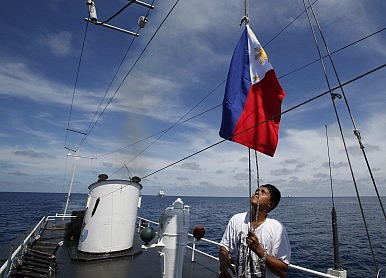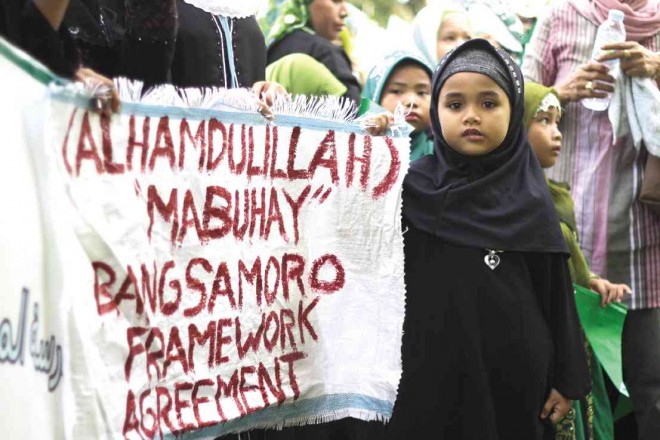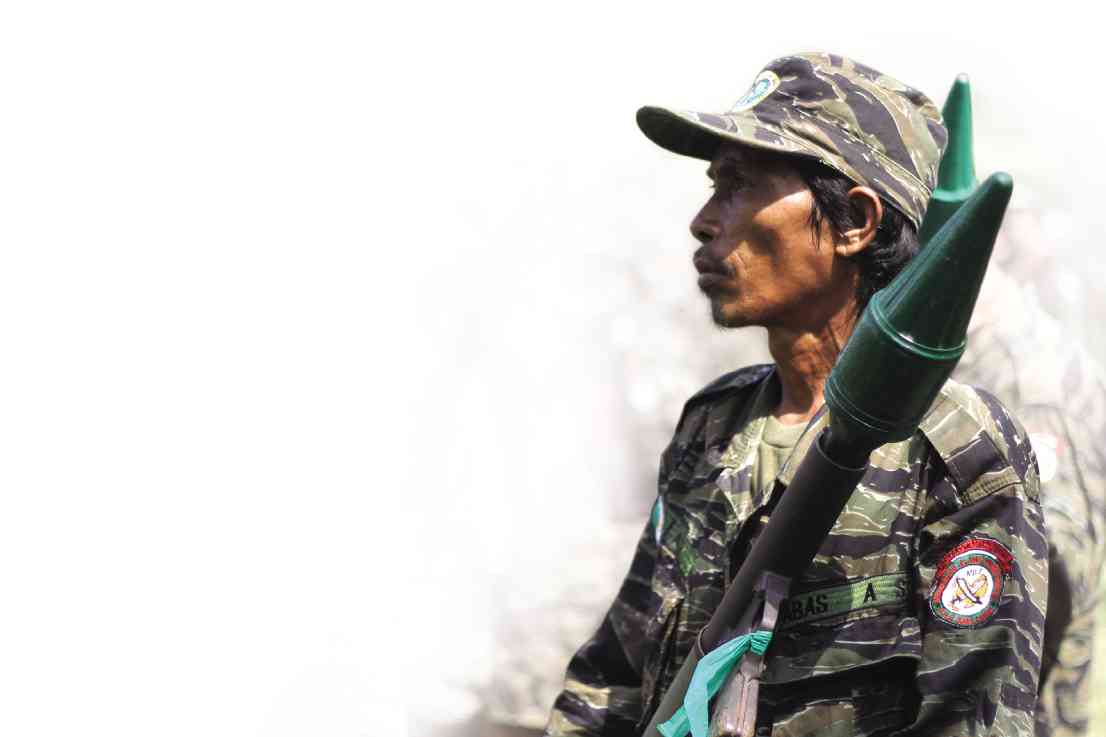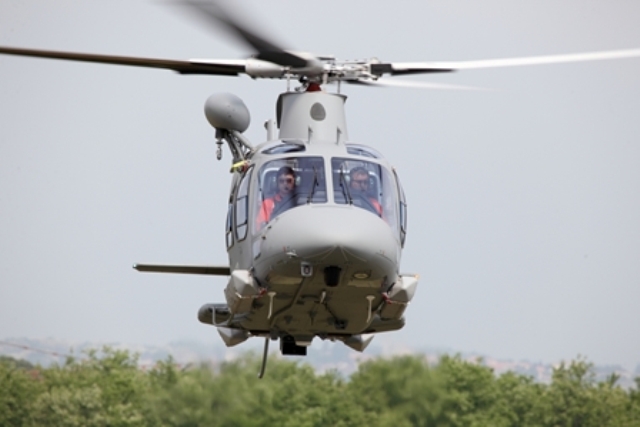Two and a half years ago, the Philippines took an unprecedented step to
shake up the territorial dispute roiling the waters of the South China Sea. For years, six nations – including the Philippines and China –
have wrestled over control of a smattering of islands and reefs dotting the oceanic expanse. At times, the dispute has been heated, even violent, but it largely played out within the four corners of the sea itself. That changed when Manila brought the dispute into the halls of the Peace Palace, the home of the Permanent Court of Arbitration. The island nation
legalized the conflict by instituting arbitral proceedings against China, essentially suing Beijing for its allegedly aggressive and “unlawful” behavior in the South China Sea.
The case has meant much to many. To the Philippines, it
bears out “the conviction that principles trump power; that law triumphs over force; and that right prevails over might.” Others
have suggested that the suit implicates the vitality of the maritime dispute settlement system, or even that it is really a case about the
validity of international law itself.
But there’s a chance that the case will be stopped in its tracks long before the tribunal has the opportunity to take on any of these issues. If China gets
its way, the court will rule that it lacks authority to hear the Philippines’s claims because they exceed the bounds of its jurisdiction.
That would be a mistake. Although the Chinese government has crafted a compelling legal argument against the tribunal’s jurisdiction, it is unpersuasive and should be rejected. Not only would a contrary holding make bad law, but it would also deprive Manila and the other smaller claimants of one of their last few tools against their ambitious northern neighbor.
The Philippines Turns to Lawfare
Although tensions have been high in the South China Sea for many years, perhaps nothing spurred the Philippine case against China as much as
the Scarborough Shoal standoff. In April 2012, the Philippine navy detained Chinese fishermen who were allegedly poaching at Scarborough Shoal, a small grouping of rocks off the coast of the Philippines. In response, Beijing sent in its own maritime vessels, leading to a tense two-month standoff. Eventually, the United States brokered a deal. By its terms, both countries would defuse the crisis by leaving the shoal. The Philippines complied; China did not. It took permanent control of the area, and has excluded its smaller neighbor since.
The standoff exposed Manila’s helplessness in the face of Chinese assertiveness. The Philippines was outmatched by China in practically every arena: militarily, certainly, but also economically, diplomatically, and politically. All these factors are reflected in the situation at sea:
Chinese vessels outnumber Philippine vessels several times over. So long as Beijing played its cards right, it wouldn’t be a fair fight – in fact, it could hardly be called a fight at all.
So Manila
turned to the great equalizer of international relations – the law. In January 2013, the Philippines brought an arbitral case against China under the auspices of the
UN Convention on the Law of the Sea (UNCLOS). UNCLOS is the definitive treaty governing the law of the sea (also known as maritime law), and both countries had ratified it years earlier. The treaty
allows parties to submit “any dispute concerning the interpretation or application of this Convention” – which is to say, practically any maritime law dispute – to an ad hoc tribunal.
In its suit, the Philippines
unleashed a litany of complaints. They fall into four broad categories. First, China has been too greedy – it has grasped for vast swathes of the South China Sea, far more than UNCLOS entitles it to. Second, Chinese lawyers have mischaracterized islands in a way that grants China too much control over their waters. Third, Beijing has been misbehaving in the South China Sea – contrary to its promises under UNCLOS, China has interfered with Philippine rights and entitlements. And finally, Manila has accused its northern neighbor of despoiling the natural environment through its unsustainable fishing and harvesting practices.
China Responds with Jurisdictional Argument
Predictably, Beijing was less than pleased to find out that it was the target of the Philippine legal barrage. Outside of court, the government
has tried unsuccessfully to use a mix of conciliation and coercion to convince the Aquino Administration to back down. Inside the Peace Palace, though, Chinese lawyers have taken a different tack. Rather than arguing that they should win, they
have argued that the tribunal lacks jurisdiction. In other words, China claims, the court does not have power under UNCLOS to hear the case in the first place.
To make this jurisdictional argument, China has drawn on a powerful intuition about the nature of the South China Sea dispute. For decades, the claimants have sparred over control of the various islands and reefs that pepper the Sea. While the dispute is fueled by many factors – including oil reserves and nationalism run riot – it is still a dispute about
territory at its core.
That fact presents a problem for the Philippines, because under UNCLOS, a tribunal does not have the authority to rule on issues of territorial sovereignty. Instead, the court is limited to deciding issues of maritime law, or questions involving how states act in the waters surrounding territory.
On the surface, Manila has complied with this prerequisite and brought only claims that fit into the “maritime law” category. But as China has pointed out, maritime rights and entitlements often cannot be determined without first deciding territorial issues. Simplifying a little, take the following example: Under UNCLOS, a Philippine vessel can fish in the waters next to a Philippine island but not in the waters adjacent to a Chinese island. So when Manila
claims that China is interfering with, say, the Philippines’ right to fish, it is asking the tribunal to find a right that would stem only from Manila’s ownership of that nearby island. In other words, Beijing believes that the Philippines is using maritime law claims to smuggle in and decide territorial sovereignty issues – something clearly outside of the tribunal’s jurisdiction.
China spelled out this jurisdictional argument in great detail last December in a “
position paper.” China’s lawyers
accused their opponent of using “contrived packaging” to mask “the very essence of the subject-matter of the arbitration, namely, the territorial sovereignty over certain maritime features in the South China Sea.” (The government has also objected to the tribunal’s jurisdiction on secondary grounds not considered here.) International law makes clear that “sovereignty over land territory is the basis for the determination of maritime rights.” Accordingly, “the Philippines is putting the cart before the horse” – the tribunal cannot rule on Manila’s claims without deciding who owns the disputed islands, a question beyond its jurisdiction. Beijing concluded that the tribunal should throw the case overboard.
Why China’s Argument Capsizes
For the most part, China gets the law right. But Beijing stumbles when it
concludes that “whatever logic is to be followed,” it is impossible for the tribunal to decide the maritime issues raised by the Philippines without first deciding ownership of the underlying territorial features.
To make their jurisdictional argument watertight, China’s lawyers must subtly misstate the Philippine position. It is true, as the position paper suggests, that
some maritime rights and claims will depend on apportioning sovereignty over the disputed islands. But that’s not universally true, because other types of behavior are simply forbidden by UNCLOS regardless of who owns the disputed features. In other words, Manila is asking the tribunal to simply assume that
every disputed feature in the entire Sea belongs to China. Even under that assumption, the Philippines argues, Beijing is still breaching UNCLOS.
Two examples explain why Manila is right on point. First, the Philippines asserts that China claims control over the entire body of water enclosed by
its infamous nine-dash line. But even if China had sovereignty over every single island in the South China Sea, UNCLOS would still not entitle it to control the entire sea. Second, China has spent the last year furiously piling sand onto the islands it controls in order to expand its surface area. This would clearly be unlawful if those islands legally belonged to the Philippines. But, Manila says, the land reclamation is still unlawful even if the islands belong to China because the program is trashing the surrounding environment in violation of China’s treaty commitments.
Now, Manila may be right or wrong about whether the nine-dash line runs afoul of UNCLOS, or whether the treaty forbids China from pursuing its groundbreaking reclamation program. But that’s a merits issue rather than a jurisdictional one. So, the Philippine lawyers reason, the arbitral tribunal should discard China’s jurisdictional argument.
Indeed, the United States has cleverly shown the tribunal how it can be done. Two days before Beijing released its Position Paper, the U.S. State Department
released a report criticizing China’s maritime claims in the South China Sea. According to the jurisdictional argument, this report should have been impossible to write – the United States has refused to take a position on the sea’s territorial dispute, so if Beijing were right, Washington should have been struck speechless about the necessarily contingent maritime issues. But, of course, the report had much to say. The State Department
acknowledged “that it takes no position as to which country has sovereignty over the land features of the South China Sea,” but then went on to criticize three different legal interpretations of the nine-dash line. If the State Department can do it, then so can the arbitral tribunal.
This is not to say that China’s argument is necessarily meritless. The Philippines may have made claims which
do turn on territorial questions. (The Aquino administration has not publicly released its exact final arguments, so it’s impossible to know at this stage.) But Beijing is wrong to suggest that Manila’s suit should be thrown out automatically, and nothing in any of China’s statements has explained why any
particular claim trespasses on territorial issues.
All Eyes on the Peace Palace
Last month, the arbitral tribunal
convened for a week to consider China’s jurisdictional argument. A decision is expected by
the end of the year, if not
sooner.
Regardless of how the tribunal rules, it’s hard to predict the next chapter of this dizzying dispute. But given the flaws in China’s primary jurisdictional argument, a decision in its favor risks being read as an admission of weakness on the court’s part. In effect, the tribunal may be saying that it fears the consequences of ruling against China on the merits because Beijing will likely ignore the decision and may even retaliate. So the tribunal may prefer to save face and dispose of the case quietly before it reaches that stage.
But for the Philippines and many of its smaller neighbors, international law represents one of the last lines of defense against perceived Chinese transgressions. Without recourse to that “
great equalizer,” the Philippine government may turn to increasingly desperate solutions, none of which would bode well for the stability of the sea.
[Sean Mirski graduated magna cum laude from Harvard Law School, where he served as Supreme Court Chair for the Harvard Law Review
. He is co-editor of Crux of Asia: China, India and the Emerging Global Order
, and a regular contributor to The National Interest
and Lawfare
.]
http://thediplomat.com/2015/08/should-the-philippiness-south-china-sea-case-against-china-proceed/







